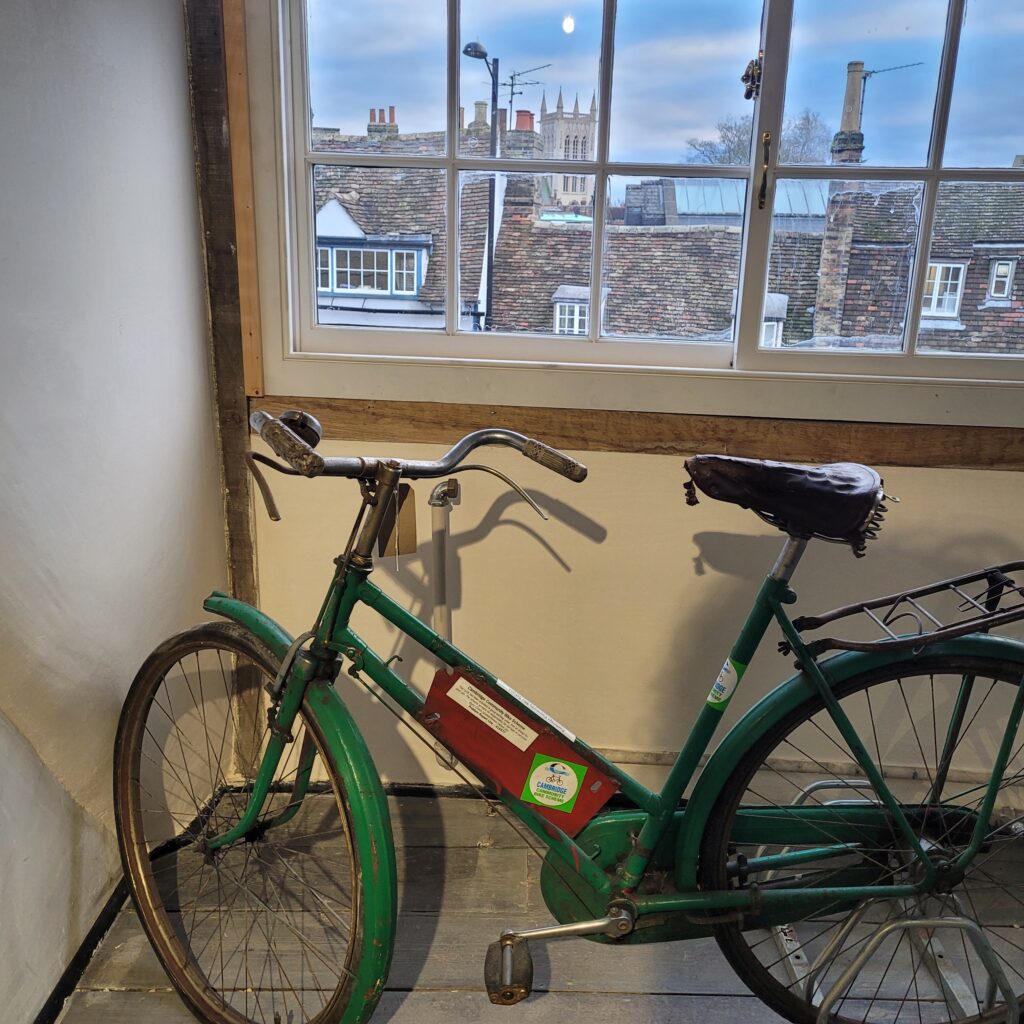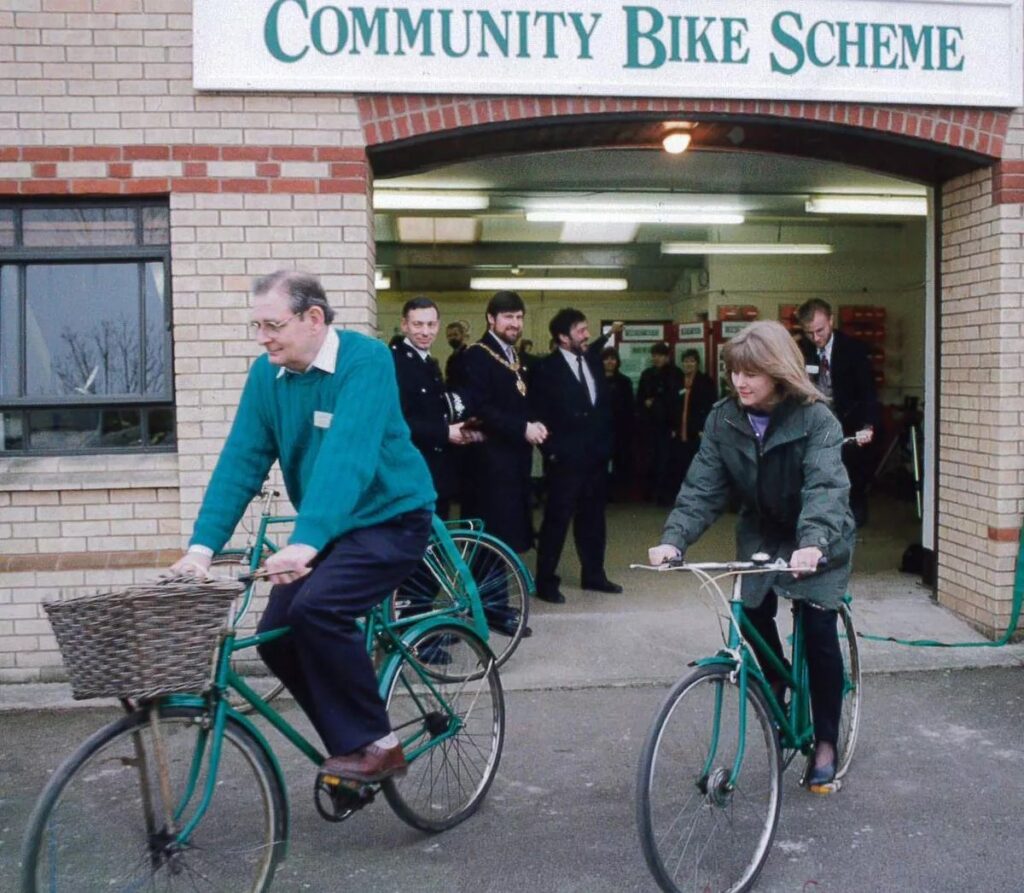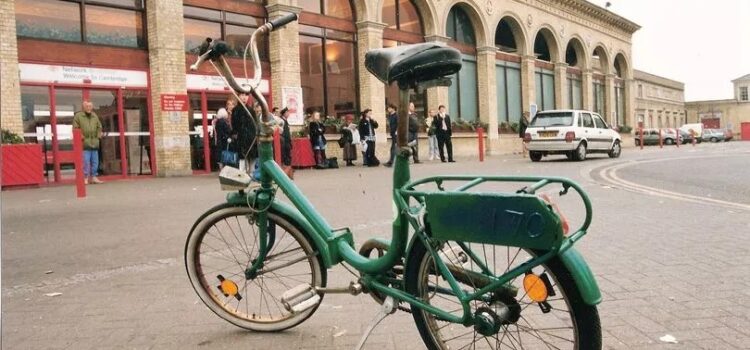Cambridge City Council was 17 years ahead of launching London’s famous ‘Boris bike’ cycle scheme when it introduced the ‘Cambridge Community Bike Scheme’, a free loan cycle initiative in 1993. The initiative began with the idea to take 300 bicycles that were no longer needed by the police and refurbish them. This refurbishment would be done by public members doing community service at a workshop on Wadloes Road. It was a hopeful scheme that aimed to create around 1,000 bicycles to reduce air pollution, ease congestion in Cambridge, and reduce cycle theft rates.

This bicycle, which is now held in the Museum of Cambridge’s collection and currently on display in their ‘Cars, Carriages, and the Cam: Navigating your way in Cambridge’ exhibition, originally belonged to Simon Sedgwick-Jell. Simon was Cambridge City Council leader at the time and helped instigate the scheme.
Unfortunately, though the scheme had good intentions, it was not meant to be. On Friday, 22nd October, 50 bikes were released onto the streets of Cambridge in 26 different locations. However, most of the bikes had disappeared by the end of the week. The city council workers managed to recover around 20 of the bikes left dumped around the city, and many were vandalised. Although the scheme didn’t start well, the council persevered and released 250 green bikes into the city by December 1993. Over the next few months, bikes would be found vandalised, dumped, or thrown into rivers. By April 1994, the council formally decided to bring the project to an end.

This bike, owned by Simon, is probably the last surviving bike from the towns bike scheme. Even after the scheme failed and ended, Simon kept hold of this bike for years and rode it around town. He was apparently known as a great local character, at one point being the leader of the local Labour party, and later a prominent member of the Green Party.
Simon passed away in 2015 and is interred in the Huntingdon Road Cemetery along with Cambridge’s great and good.
